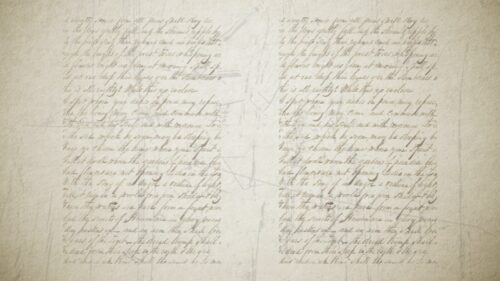-
24 Bible Doctrine – How Do The Five Points Of Calvinism Align With The Framework Of Sovereign Grace?
A Transcript Of The Video Study In our previous study, I reminded you that there are two diametrically opposed systems of biblical theology—Arminianism and Calvinism. The Five Points of Calvinism were formulated in response to the Five Points of Arminianism, and they are as follows: Total Depravity, Unconditional Election, Limited Atonement, Irresistible Grace and the Preservation of the Saints. The natural and most common way to approach these teachings is in chronological order, beginning with the first point, moving down the list to the last point. However, the Five Points may also be viewed according to a structural order. The first and last points speaking of the nature of man, and his relationship to and with God; the middle three points speaking of the nature…
-
Fixed Was The Eternal State Of Man
Theme: Predestination See Jared Smith’s video teaching on the hymn, a devotional exposition according to the Framework of Sovereign Grace. Text: Luke 16:26; Ephesians 1:3-14 Luke 16:19-31: “There was a certain rich man, which was clothed in purple and fine linen, and fared sumptuously every day: and there was a certain beggar named Lazarus, which was laid at his gate, full of sores, and desiring to be fed with the crumbs which fell from the rich man's table: moreover the dogs came and licked his sores. And it came to pass, that the beggar died, and was carried by the angels into Abraham's bosom: the rich man also died, and was buried; and in hell he lift up his eyes, being in torments, and seeth…
-
22 Bible Doctrine- Why Is Supralapsarianism An Important Issue?
A Transcript Of The Video Study This is the twenty-second study in the series, and I would like to speak to you once again on the subject of Supralapsarianism. In our previous study, I shared several reasons I believe Supralapsarianism is the correct view of God’s electing love. For this study, I would like to explain why I believe the issue of Lapsarianism is an important matter. You see, there are many who view the subject of Lapsarianism as an insignificant issue. Some say the whole idea of discovering an order in God’s decree of election is nonsense. They say it is like attempting to count the number of angels that can fit simultaneously through the eye of a needle—what’s the point? They say it…
-
21 Bible Doctrine – Why Is Supralapsarianism The Correct View?
A Transcript Of The Video Study This is the twenty-first study in our series on Bible Doctrine, and I would like to speak to you on the subject of Supralapsarianism. In our previous study, I explained the meaning of Lapsarianism, distinguishing between two basic views—that of Sub or Infralapsarianism, which refers to God’s decree of the fall before that of election, meaning the human race was viewed in sin when the Father set His love upon the elect; and that of Supralapsarainism, which refers to God’s decree of election before that of the fall, meaning the human race was viewed without sin when the Father set His love upon the elect. For this study, I would like to share some of the reasons I believe…
-
20 Bible Doctrine – What Does Lapsarianism Mean?
A Transcript Of The Video Study In our previous study, I held forth, what is sometimes called, the Supralapsarian view of the Father’s electing love. For this study, I would like to speak on this subject at more length. If we remove the prefix of the word, then we are left with lapsarian. The Latin term “lapsus” means “to fall”, from which we get our English word lapse, referring to a fall or failure to maintain some standard. For instance, you might say, “I had a lapse in memory.” Or, “I lapsed behind when I went for a walk with my family.” Well, when the label Lapsarianism is used in a theological context, it is speaking about the decree of God in election as it…
-
19 Bible Doctrine – How Does Paul’s Analogy Of A Potter And The Clay Fit Within The Context Of Romans 9 As A Whole?
A Transcript Of The Video Study In our previous study, we considered the Father’s role in the work of salvation, explained by Paul in Romans 8:28-11:36. You will remember, there are six parts to this section of the letter: In (8:28-39), Paul extols the Father’s eternal blueprint of electing love; in (9:1-5), he confesses his burden for the salvation of the Jews; in (9:6-33), he explains the Father’s eternal blueprint of electing love; in (10:1-3), he once again confesses his burden for the salvation of the Jews; in (10:4-11:32), he once more explains the Father’s eternal blueprint of electing love; and in (11:33-36), he ends where he began, extolling the Father’s eternal blueprint of electing love. Now, the analogy of a potter and the clay…



